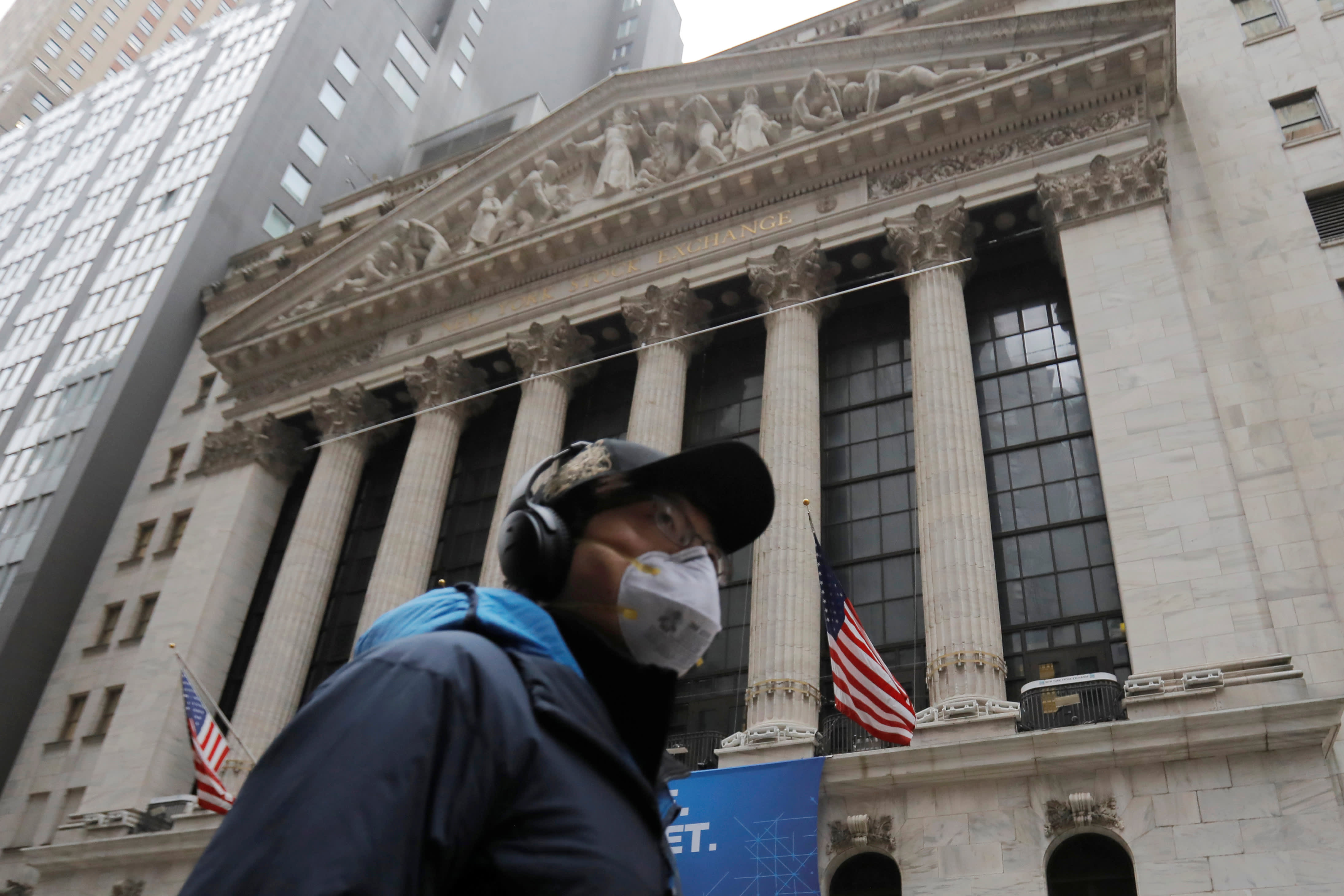
It's a tough time to be an investor.
The Dow Jones Industrial Average officially entered bear-market territory on Wednesday after a 1,400-point plunge, falling more than 20% below its record closing high made just a few weeks ago in February. Wednesday's nearly 6% drop came on a volatile day of trading during which the World Health Organization declared the fast-spreading coronavirus a global pandemic.
The S&P 500 ended trading about 5% lower, just short of a bear market, which is defined as a 20% drop from recent highs.
Yet analyst Craig Johnson said the S&P's trading to date — even in this particularly volatile time — has been technically "perfect."
"What I mean by that is, if you look at the lows you'd seen in December of '18 to the highs we put in only about two weeks ago, you've seen these sell-offs really obey Fibonacci retracement levels," the senior technical research analyst at Piper Sandler said Wednesday on CNBC's "Trading Nation"
Fibonacci retracement levels are widely used in technical analysis to find potential areas of support or resistance in stocks and indexes. Inspired by medieval mathematician Leonardo Fibonacci, who had theories about specific numbers and patterns repeating throughout nature, the levels are displayed on charts as horizontal lines associated with percentages that track how much of a previous move has been retraced.
Last Friday, for instance, "you pulled back through ... the 50% level," Johnson said. Stocks closed lower that day after gaining traction into the close and paring deeper losses.
"You found your footing, you started to rally up, and then you broke that," Johnson said. "Once you broke it, you corrected on Monday all the way back to the next Fibonacci retracement level."
Monday was the Dow's worst day since 2008, with that index seeing a nearly 8% loss. The S&P dropped more than 7.5%.
On Wednesday, the S&P ended trading at 2,741.38 with a nearly 5% loss for the day, but Johnson warned there could be more weakness in store.
"The level that we're going to be watching from here ... is 2735, because that is the level of Monday's lows," the analyst said. "Any sort of break below that is going to probably open the door for another leg lower."
In Thursday's premarket, the S&P sank 4.65 to 2,613.50.
Nancy Tengler, chief investment officer of Laffer Tengler Investments, said in the same interview that after hedging her clients' portfolios appropriately, she saw the recent losses as potential opportunities.
"We had put a hedge on our clients' portfolios in early February. It's worked out very nicely. It's a victory, I suppose, but a pyrrhic one," she said. "And so, [on Tuesday], we actually started entering into the long-only space."
Tengler said her firm sold out of some of its consumer staples holdings that had been relative outperformers — namely Walmart and PepsiCo — and "added to some more cyclical exposure."
"As this market looks through the coronavirus and oil issues, we think that you'll be happy that you own some of those stocks," she said of the cyclical names. "So, not super-cyclical, but things like Microsoft, Salesforce.com. We added a little to Facebook. And then, also, we added to some of the financials and a new position in T.J. Maxx."
Tengler stressed that when it comes to buying stocks, she's "gingerly stepping in."
"We're not going in with both feet. We're just taking our time and picking away at the higher-quality names," she said.
Disclosure: Laffer Tengler Investments owns shares of Microsoft, Salesforce.com, Facebook and TJX Companies.
https://news.google.com/__i/rss/rd/articles/CBMiYmh0dHBzOi8vd3d3LmNuYmMuY29tLzIwMjAvMDMvMTIvY29yb25hdmlydXMtc3RvY2stbWFya2V0LXNwLTUwMC1sZXZlbC10by13YXRjaC1hcy1zdG9ja3MtZHJvcC5odG1s0gFmaHR0cHM6Ly93d3cuY25iYy5jb20vYW1wLzIwMjAvMDMvMTIvY29yb25hdmlydXMtc3RvY2stbWFya2V0LXNwLTUwMC1sZXZlbC10by13YXRjaC1hcy1zdG9ja3MtZHJvcC5odG1s?oc=5
2020-03-12 11:27:00Z
52780657522919




